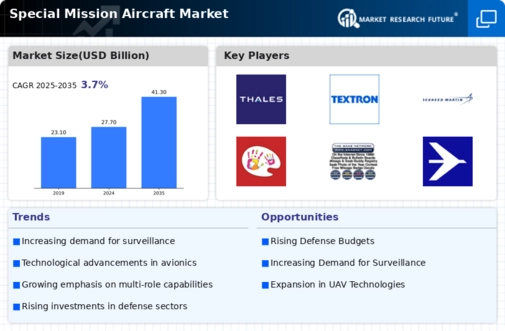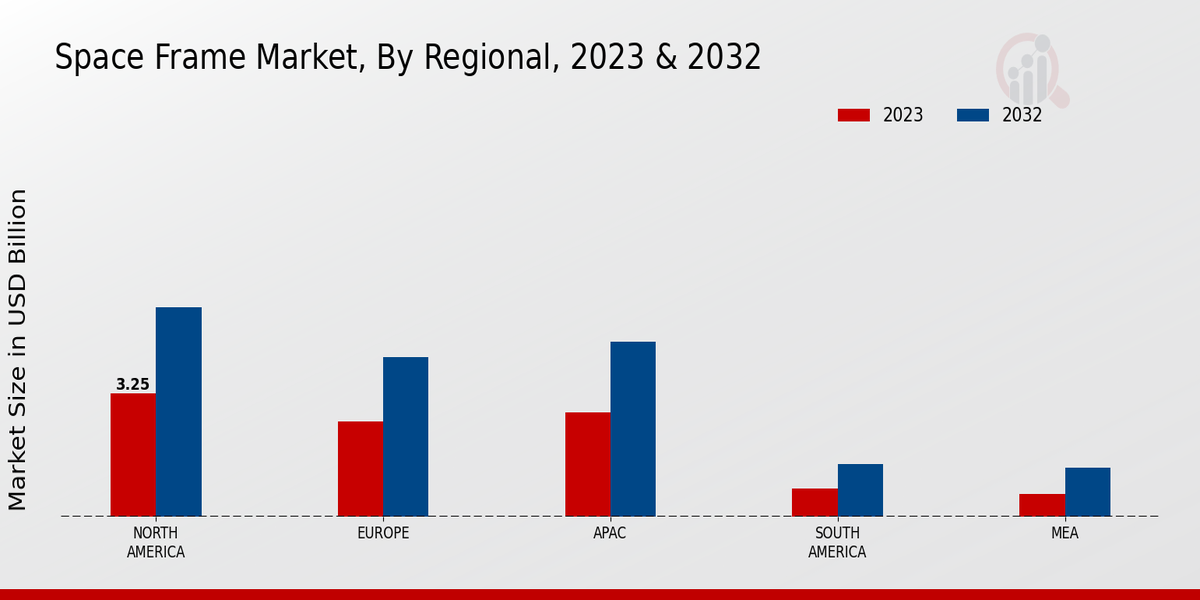Chart Representation
This section includes charts that illustrate the projected growth trajectory of the Global Special Mission Aircraft Market Industry, highlighting key metrics such as market size, growth rates, and regional demand trends. The charts visually represent the anticipated increase from 27.7 USD Billion in 2024 to 41.3 USD Billion by 2035, along with the CAGR of 3.69% for the period from 2025 to 2035.
Geopolitical Tensions
Geopolitical tensions across various regions are influencing the Global Special Mission Aircraft Market Industry. Heightened conflicts and territorial disputes compel nations to bolster their surveillance and reconnaissance capabilities. For instance, ongoing tensions in Eastern Europe and the South China Sea have prompted countries to invest in special mission aircraft to monitor potential threats. This strategic necessity is reflected in the increasing procurement of specialized aircraft, as nations aim to maintain situational awareness and respond effectively to emerging threats. The market is expected to grow at a CAGR of 3.69% from 2025 to 2035, driven by these geopolitical dynamics.
Increasing Defense Budgets
The Global Special Mission Aircraft Market Industry is experiencing growth driven by rising defense budgets across various nations. Governments are prioritizing national security and investing in advanced military capabilities, which includes special mission aircraft for surveillance, reconnaissance, and intelligence operations. For instance, countries like the United States and India have significantly increased their defense spending, with the global defense budget projected to reach approximately 27.7 USD Billion in 2024. This trend indicates a robust demand for specialized aircraft, as nations seek to enhance their operational readiness and capabilities in a rapidly evolving security landscape.
Technological Advancements
Technological advancements play a pivotal role in shaping the Global Special Mission Aircraft Market Industry. Innovations in avionics, sensor technologies, and communication systems are enhancing the operational effectiveness of special mission aircraft. For example, the integration of artificial intelligence and machine learning in data analysis allows for real-time decision-making during missions. Furthermore, advancements in stealth technology improve the survivability of these aircraft in hostile environments. As these technologies continue to evolve, they are likely to drive demand for modernized fleets, contributing to the market's projected growth to 41.3 USD Billion by 2035.
Growing Demand for ISR Capabilities
The demand for Intelligence, Surveillance, and Reconnaissance (ISR) capabilities is a significant driver of the Global Special Mission Aircraft Market Industry. As military operations become increasingly data-driven, the need for advanced ISR platforms has surged. Special mission aircraft equipped with sophisticated sensors and imaging technologies provide critical situational awareness for military and humanitarian operations. For instance, the use of these aircraft in counter-terrorism operations has demonstrated their effectiveness in gathering actionable intelligence. This growing emphasis on ISR capabilities is expected to propel the market forward, aligning with the projected growth to 41.3 USD Billion by 2035.












